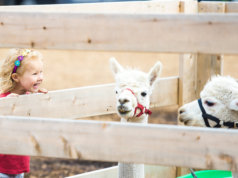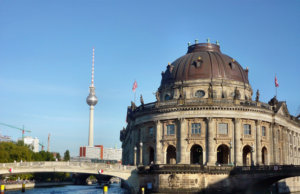Berlin – like most German cities – is often praised for its ample green space. But how green is the capital city in reality? DW sat down with well-known nature conservationist Herbert Lohner to get his thoughts on the matter.

A green metropolis? Or standard urban jungle?
Berlin is often considered one of Europe’s greenest cities. How close is this perception to reality? According to Lohner, that’s not wholly the case.
Berlin is one of Germany’s greenest cities, but compared to other ones in Europe it’s actually below average. Following reunification, many of the areas that served as buffers for the Berlin Wall and were not accessible to city dwellers suddenly transformed into parks and other grassy areas. This did make things better for people living in those areas, but Lohner thinks Berlin could do much better.
The trend of green infrastructure
Currently, there are movements going on not only in Gemrany – but throughout the world – to improve green infrastructure, especially in large urban areas. As more and more people to continue to move into cities, this will be even more pressing. Currently, the Berlin government is working on improving the city’s infrastructure though instruments such as protecting green spaces and trees.
But the problem is that the green spaces in Berlin are deteriorating too quickly, according to Lohner. He says people are using them too intensively – yes that’s what they are there for, to be used – but the problem is that litter is accumulating, there is a lack of resources for maintenance, too few staff and too few trained gardeners.
As well, although there are many green spaces in the city, others are vulnerable to being built on. This is especially true in the face of the city’s housing crisis. Spaces that could also be converted into green spaces, such as brownfield sites are being sold off. There is currently no protection for brownfield sites in Berlin.
But why are urban green spaces so important?
Urban greenery is pretty, it makes the city more attractive and adds to the dynamic of the space. But it also serves a very important function that isn’t seen with the eye. It’s vital for the cooling down of cities, especially as climate change becomes a more pressing issue.
Green spaces predominantly include parks and gardens, but they could also be strips of grass that border bodies of water like canals, river and lakes. For this reason, a big factor in the future of protecting the city’s greenery will be to ensure the watersides are not privatized and sold off into smaller pieces of land. This is also important for maintain a healthy range of plant species – especially those that thrive by wet areas.
In Berlin, Lohner names the Natur-Park Südgelände and the Nordbahnhof park are both good examples of redevelopment projects, but that this needs to continue further.
Berlin needs to continue to protect its green spaces
Policies, resources and attention need to be put towards protecting the city’s urban greenery long-term. Ideally, Lohner thinks that creating a green network, similar to the grey network formed by the city’s streets, would be a great idea. More greenery needs to be introduced along streets, on rooftops and on building facades.



















